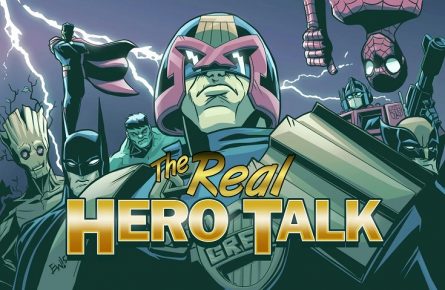Behind the Line: Visibility (Brigador Pt. 2)

Last time, we spoke a bit about value with video games, using Brigador as an example. This week, I want to talk about visibility.
Target Audience
Whenever a developer is working on a game, one of the first questions has to be “what is the target audience”. If the game should appeal to a lot of people, then the target is wide. With a wide audience, the potential for profit is much higher, and a wide advertising campaign can be used. If the game should appeal to a niche, then the target is narrow. In this case, carefully targeted advertising is needed.
Here’s an old example of what I mean. Believe it or not, a long time ago, Dragon Ball Z was not the household name it is today. Its popularity was growing, but it was still primarily a late night cartoon network thing. While it was still in this niche state, a DBZ game was released. To get attention, a commercial was aired on Cartoon Network. The commercial was as simple as can be. Two guys sitting on a couch, with a roll of DBZ themed toilet paper on the coffee table in front of them. One of them asks “If it was the last roll in the house, would you?”. This was followed up with a couple game clips, and a title graphic.
(I’m really impressed I was able to find this. I was starting to think I was crazy and making up false memories)
This ad was great for a few reasons. 1. It was certainly very cheap to produce. 2. It got the point across clearly. 3. It spoke to the target audience. 4. It was presented where the target audience was.
A niche title has to be very efficient with its advertising dollars. While it’s strange that it came from DBZ, this is a good example of doing it well. They knew their audience, they knew what would appeal to their audience, and they knew where their audience would be so they could go there and be visible to them.
“You are not the customer”
This is a very important piece of advice for most anyone, and especially for people in video games. Some developers decide to make the games that they want to play. While there’s nothing wrong with that, it doesn’t always lead to profit. If the developer is OK with that, then everything is fine. The problem happens when the developer thinks that making the game that they want to play means that it’s a game that EVERYONE wants to play. The developer doesn’t realize that its appeal is much more limited than that. As a result, this kind of project can have too much money sunk into it than it can make back.
This is why the phrase “you are not the customer” is important. It’s a reality check to people who keep thinking of what they want that they lose track of what the customer actually wants.
“If something is good, the audience will come”
This thought is a very common fallacy that I see on message boards. The idea that quality on its own will eventually bouy something to greater success. This CAN happen in some cases, but pretty much never by quality alone. The piece that this ignores is how the customer will learn of the product in the first place. Think about the Steam storefront. How many games are on there? According to a not very recent report, over 6000. Do you know what they all are? Do you know which are good and which are bad? Do you know which YOU would like? Sure there are the user reviews, and that’s better than nothing, but there are all kinds of things that can skew those reviews.

User reviews, it’s better than nothing!
More significant than the reviews, though, do you know what all of the quality games are on Steam? No. There’s too much to go through to be able to separate the signal from the noise. If something would appeal to you, you’ll need it pointed out to you. That is what advertising is really for.
Pages: 1 2








Leave a Reply